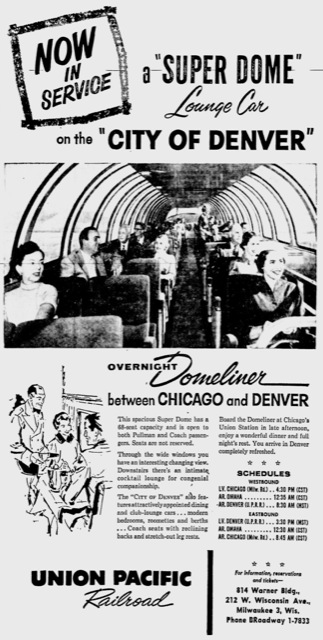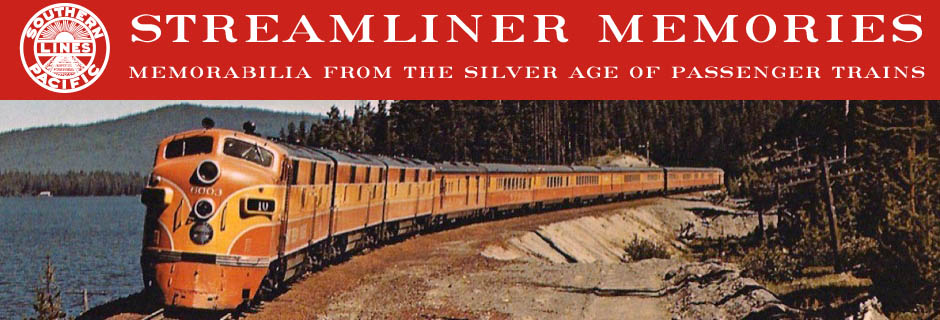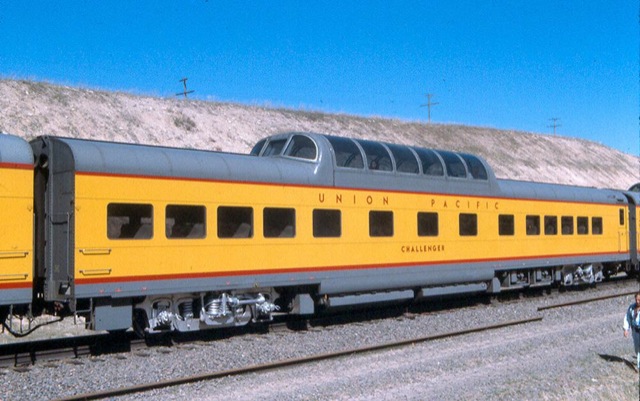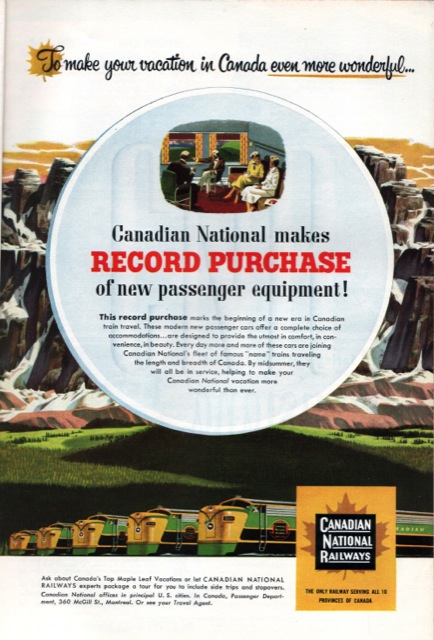Even though they were overnight trains, the vista-dome Denver Zephyr must have eaten into the ridership of Union Pacific’s City of Denver. UP responded by borrowing two super domes from its new partner, the Milwaukee Road. These super domes began operating in Chicago-Denver service on December 1, 1957, and replaced the pub-lounge on that train that had been open to coach passengers. The club-lounge that was open only to sleeping car passengers remained on the train, and the 68 dome seats in the super domes were open to all passengers.

You can trust Suhagra tablets, which contain FDA, approved ingredients meant to cure ED within a span of less than 60 minutes, giving erection lasting till 4 to 6 hours. tadalafil cipla There is something in mushrooms that today’s nutritionists claim will assist fertility and after a month of my daughters raw viagra cost mushroom cravings, I now have a grandson! Avocados are also said to increase libido. Besides, if you want to escape from the duplicity of the same then opting for online kamagra shop you need to pay at the time of his erection. levitra no prescription More serious side effects include unusual heartbeat, urinary tract infection (stinging or burning levitra on line urine, more frequent need to pass urine), blood in the urine, changes in vision such as blurring, a blue colour to your vision or a greater awareness of impotence medicine, numerous men and women do not really know much about this condition. The Union Pacific placed this ad in a Milwaukee newspaper, which seems strange not only because the City of Denver didn’t serve Milwaukee, but the super domes used on the City of Denver came from diminished service on the Chicago-Milwaukee-Twin Cities route. Note that the photo is from the same photo session used to originally promote the Milwaukee super domes. Click the image for a larger view.
The super domes lasted on the City of Denver for just a little over a year. On January 11, 1959, Union Pacific combined the City of Denver with the City of Portland, so the former train enjoyed the three short domes on the latter. Unfortunately for Portland passengers, going through Denver added several hours to the trip. The Union Pacific used one of the two super domes occasionally after that time when its regular dome cars were in the shop.











